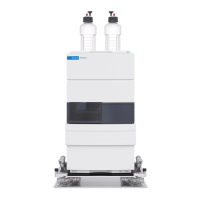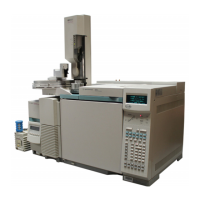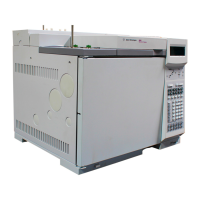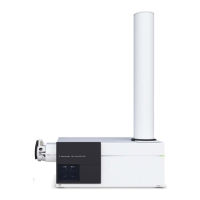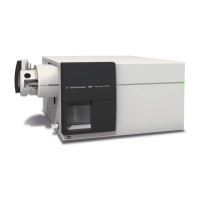Routine Maintenance: Inlets
Maintaining a PTV
Released: March 2004 6850 Series II GC User Information page 164 of 256
2. Tighten loose connections to correct leaks, if necessary. You may need to
repeat the leak test.
If the pressure drop is now less than 0.5 psi, you can consider the inlet
system leak-free. If the pressure drops faster than the acceptable rate, con-
tinue to search for leaks and repeat the pressure test. If all fittings appear
to be leak free, but the inlet system is still losing too much pressure, you
may need to replace the inlet manifold.
Potential leak points
Check the following areas when checking an inlet system for leaks.
In the oven
• Make sure the bottom of the inlet is correctly capped.
On the inlet
• Septum (septum head only)
• Lower inlet seal at bottom of inlet
• Ferrule on inlet liner
• Connections for carrier gas, septum purge (septum head only)
At EPC module
• O-rings behind the block where the inlet’s pneumatic lines enter the
module
• Septum purge cap (septum head only)
• Chemical trap O-rings
• O-rings in manifold fittings
Checking the split vent line for restrictions
Over time, the split vent line (including the trap) can become obstructed with
condensed vapors and other debris. If you have access to a Control Module,
you can perform an automated test to check for split vent line restrictions that
may cause problems in using the inlet. See the Control Module documentation
for details. The Control Module test program will prompt you to complete hard-
ware tasks similar to the ones described in “Leak testing the PTV inlet” on
page 160.
